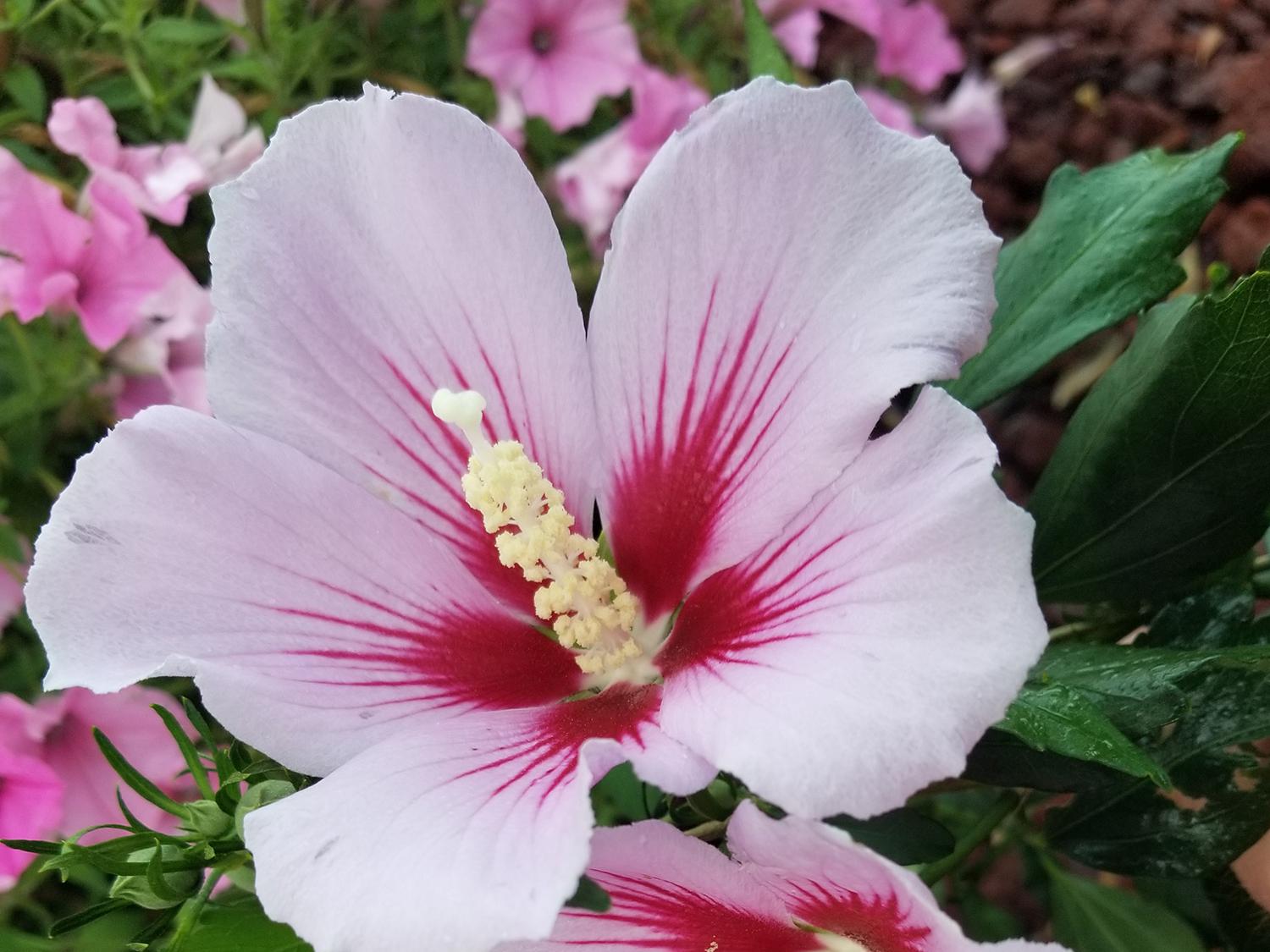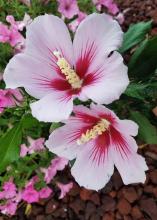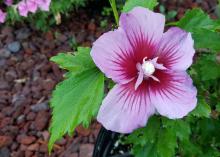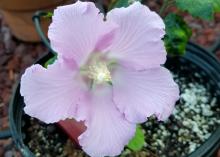Information Possibly Outdated
The information presented on this page was originally released on May 21, 2018. It may not be outdated, but please search our site for more current information. If you plan to quote or reference this information in a publication, please check with the Extension specialist or author before proceeding.
Rose of Sharon varieties give options for gardens
One day right after we moved to Mississippi, I got a call from a homeowner with a question about her althea plant. I was stumped, but soon found that the plant she was referring to was commonly called rose of Sharon.
This is an old-time landscape and garden deciduous plant. Many folks mistakenly call rose of Sharon a hollyhock, as the flowers do look fairly similar. They are big and bold in the landscape, and I’ve seen many planted in the wrong locations, blocking window, doors and porches.
I’ve recently become fascinated with some of the newer selections from Proven Winners: Orchid Satin, Purple Pillar and Pollypetite.
Orchid Satin has large, beautiful, single orchid-pink blooms with a dramatic red eye accent. My plant is small now, and I’m growing it in a 4-gallon container, but I’m amazed at its soft and graceful branching habit.
This plant has the potential to be medium-sized with a mature height greater than 10 feet and a 4- to 6-foot spread. I’ll have to bump it up into a larger container in a couple of years. This plant tolerates pruning in the late winter or early spring. Feed every spring with a controlled-release fertilizer.
I really like the fact that Orchid Satin is a sterile, seedless selection, which means I don’t have to weed out seedlings every year.
Most rose of Sharon shrubs have the potential to be large -- especially wide -- landscape plants. If you have a narrow space, then Purple Pillar is the rose of Sharon for you.
This selection naturally has a columnar growing habit. It will grow to 10 feet tall or more but only 3 feet wide. This narrow growth habit creates very few branches, which means pruning is rarely required except for some tidying up in early spring.
One thing I like about the plant is that each stem becomes covered along its entire length with bright-purple blooms, each with a dark purple-red eye. Each flower is a semi-double, having two or more layers of petals with the pistil and stamens visible.
If you still don’t think you have enough room for Orchid Rose or Purple Pillar, I’ve got one more rose of Sharon for you to consider. There are three reasons you ought to grow Pollypetite in a small landscape space.
Pollypetite has a dwarf habit that is fantastic, only reaching about 3 to 4 feet tall and wide. This plant has large, lavender-pink flowers that contrast nicely with its dark-green foliage. And my third reason is that Pollypetite is nearly seedless, so weeding is not necessary.
As with Orchid Satin and Purple Pillar, Pollypetite needs no special care. Pollypetite is a new selection for 2018, so be patient for your favorite garden center to get in stock.
All three of these selections have been appealing additions to my eclectic collection of colorful containers and plants in my home landscape. I highly suggest you try them in your garden and landscape this year.





